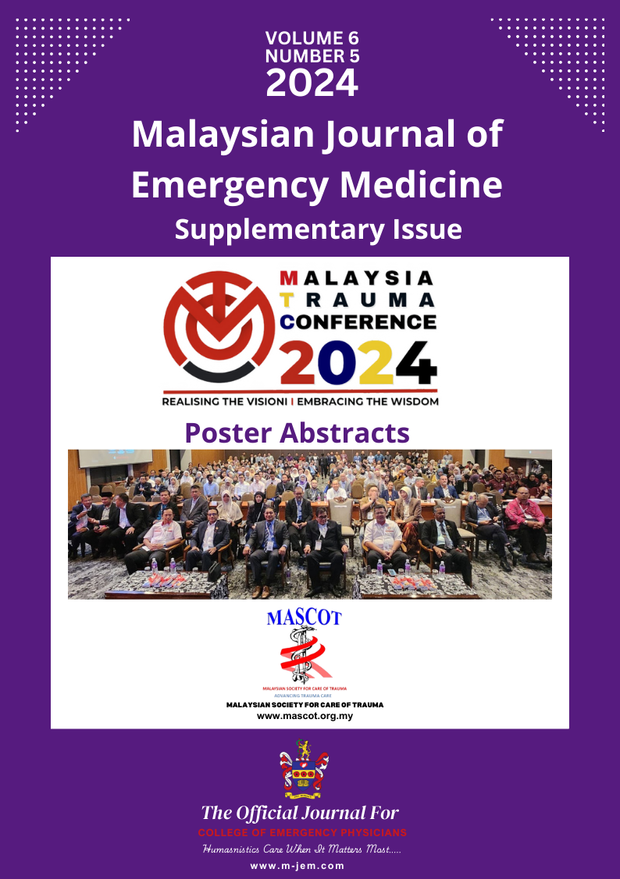A24 When Breath Is A Battle: Managing Blunt Traumatic Laryngeal Injury
Main Article Content
Abstract
INTRODUCTION
Laryngeal trauma poses a significant risk with a high fatality rate following high-impact injuries such as motor vehicle accidents (MVA). Rapid identification and management of laryngeal trauma are crucial to prevent airway obstruction and complications.
CASE DESCRIPTION
A 15-year-old boy was brought in with hemoptysis, drooling, and respiratory distress requiring supplemental oxygen after a motor vehicle accident. His vital signs were blood pressure 132/79 mmHg, heart rate 98 bpm, temperature 37°C, oxygen saturation 97% on room air and Glasgow Coma Scale (GCS) of E4V5M6. The physical examination of the neck was unremarkable. A laceration over his left mandible was sutured. Flexible bedside laryngoscopy by the otorhinolaryngology team showed bilaterally swollen arytenoids but a patent airway. He underwent nasal awake fiberoptic intubation for impending upper airway obstruction. Post-intubation bronchoscopy showed pooling of blood from the lungs, and direct laryngoscopy revealed a mucosal tear on the posterior pharyngeal wall at the epiglottis level. A contrast enhanced computed tomography (CECT) neck scan showed laryngeal edema with hematoma and multiple foci of air pockets causing airway stenosis, classified as Schaefer Grade 2. He was started on intravenous dexamethasone for five days. He was extubated after four days and discharged home on the eighth day post-injury.
DISCUSSION
The presence of hemoptysis and drooling heightened clinical suspicion of laryngeal trauma. Fiberoptic laryngoscopy aids diagnosis, while a CT scan is the gold standard for assessing the larynx and guiding treatment. A normal fiberoptic examination does not rule out injury, as bleeding or edema can obscure the findings. In this case, rapid airway management with early intubation and a CT scan, which confirmed the laryngeal injury, prevented catastrophic long-term consequences.
CONCLUSION
A high index of suspicion for laryngeal trauma is essential in patients presenting with soft signs of neck injury. Prompt recognition and acute airway management are crucial in improving patient outcomes.
Metrics
Article Details

This work is licensed under a Creative Commons Attribution-NonCommercial 4.0 International License.

